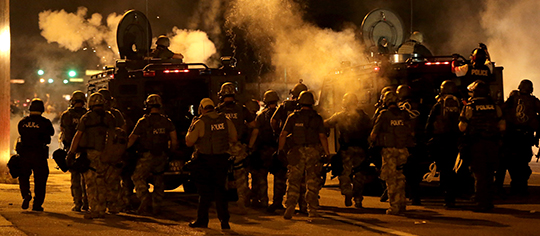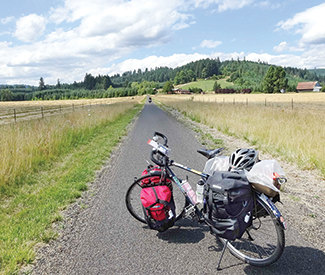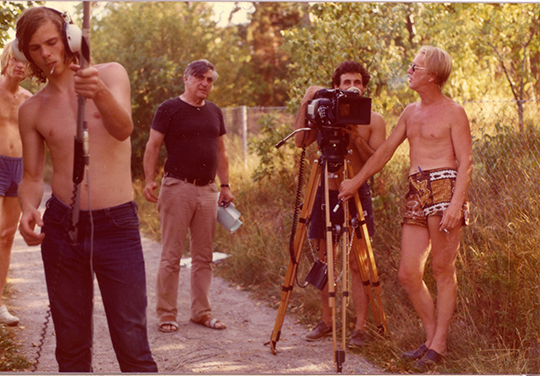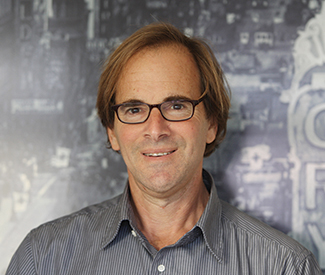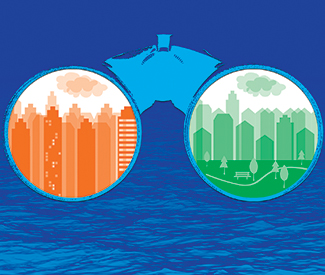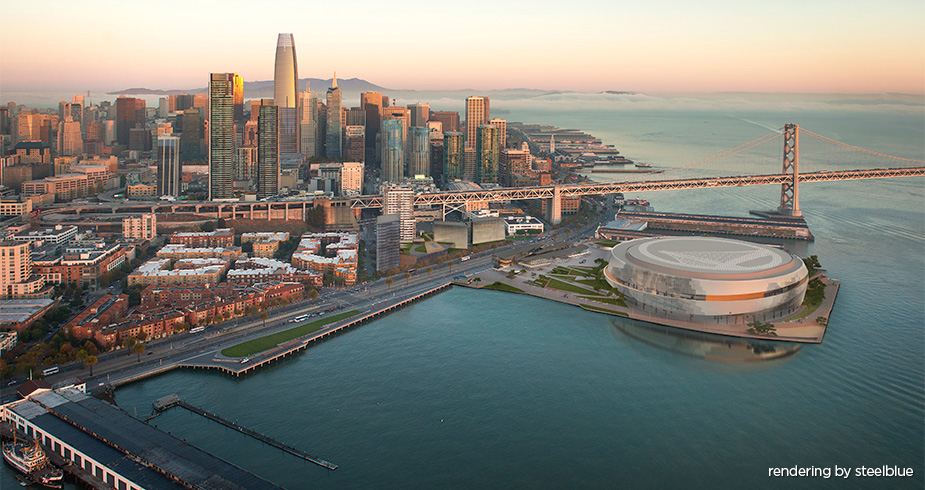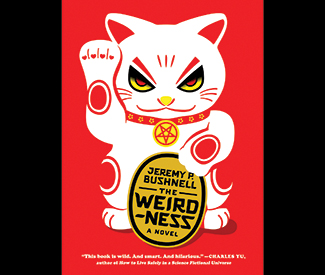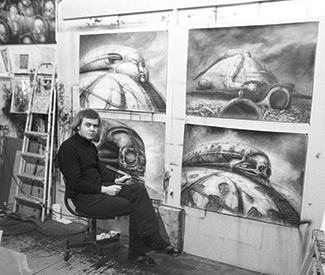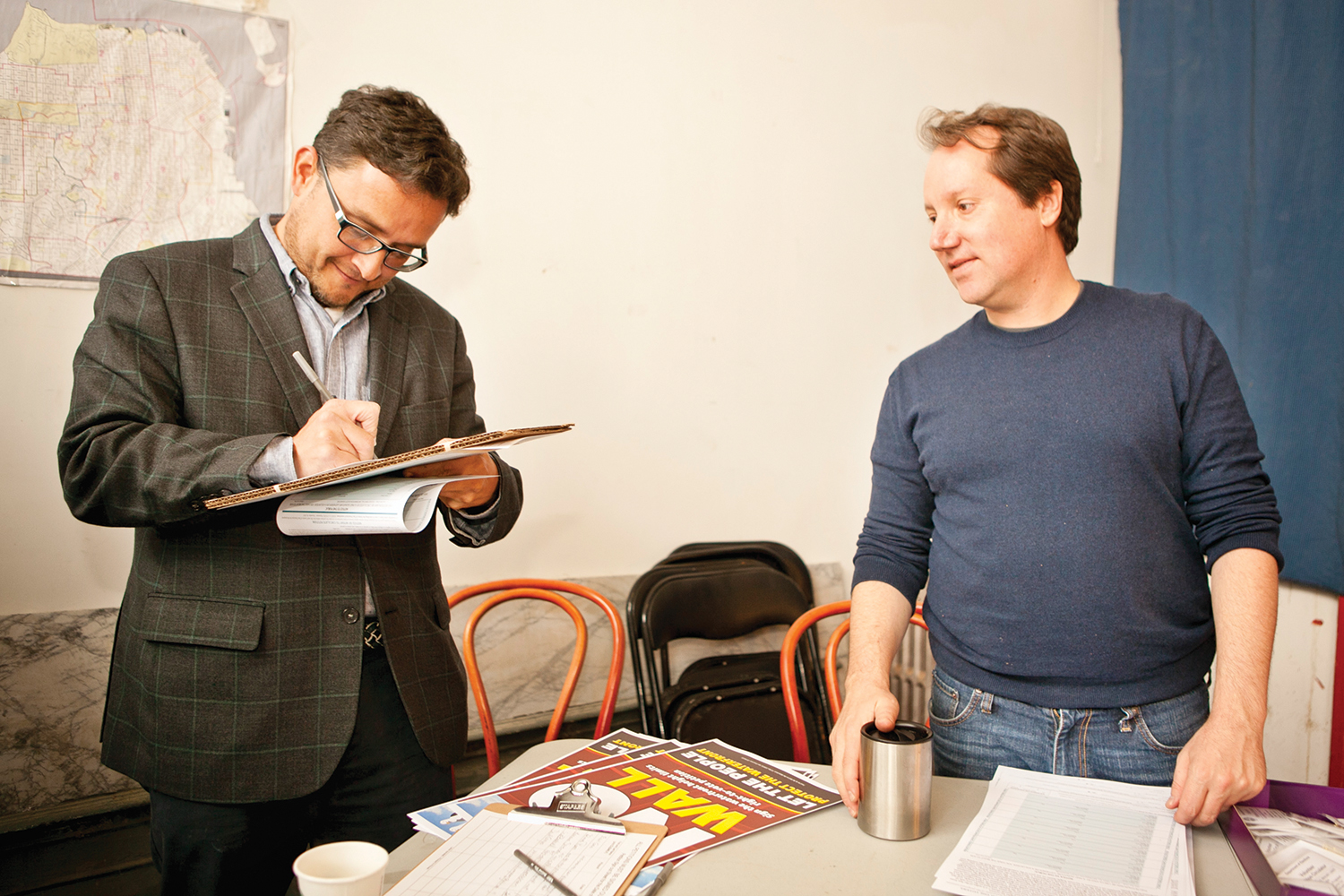WEDNESDAY 22
ROCK
Bottom of the Hill: 1233 17th St., San Francisco. Giggle Party, Sweat Lodge, Nasty Christmas, 9 p.m., $8.
Brick & Mortar Music Hall: 1710 Mission, San Francisco. Brave Ulysses, Winnie Christian, 8 p.m., $5-$8.
The Chapel: 777 Valencia St., San Francisco. Black Cobra Vipers, Yesway, Annie Girl & The Flight, 8 p.m., $12.
El Rio: 3158 Mission, San Francisco. Joe Shambeaux & The Doctors, Zbörnak, 8 p.m., $5.
Hemlock Tavern: 1131 Polk, San Francisco. Bad Coyotes, The Shirks, Musk, The Shanghais, 8:30 p.m., $6.
The Knockout: 3223 Mission, San Francisco. Cumstain, That Ghost, Bloom, Sharky Coast, DJ Special Lord B, 9:30 p.m., $6.
Make-Out Room: 3225 22nd St., San Francisco. UFOFBI, White Rainbow, 7:30 p.m., $5.
Milk Bar: 1840 Haight, San Francisco. Bonnie & The Bang Bang, Down Dirty Shake, DonCat, Young Creatures, 8:30 p.m., $5.
Rickshaw Stop: 155 Fell, San Francisco. J.D. Wilkes & The Dirt Daubers, Trainwreck Riders, 8 p.m., $10-$12.
DANCE
Beaux: 2344 Market, San Francisco. “BroMance: A Night Out for the Fellas,” 9 p.m., free.
The Cafe: 2369 Market, San Francisco. “Sticky Wednesdays,” w/ DJ Mark Andrus, 8 p.m., free.
Cat Club: 1190 Folsom, San Francisco. “Bondage A Go Go,” w/ DJs Damon, Tomas Diablo, & guests, 9:30 p.m., $5-$10.
Club X: 715 Harrison, San Francisco. “Electro Pop Rocks: EPR-UV,” 18+ dance night, 9 p.m., $15-$20.
Edinburgh Castle: 950 Geary, San Francisco. “1964,” w/ DJ Matt B & guests, Second and Fourth Wednesday of every month, 10 p.m., $2.
Elbo Room: 647 Valencia, San Francisco. “Bodyshock,” w/ Plack Blague, Scott Arford, DJs Crackwhore & Blk Rainbow, 9 p.m., $7.
The EndUp: 401 Sixth St., San Francisco. “Tainted Techno Trance,” 10 p.m.
F8: 1192 Folsom St., San Francisco. “Housepitality,” w/ Avatism, EO, Fil Latorre, Bai-ee, 9 p.m., $5-$10.
Harlot: 46 Minna, San Francisco. “Qoöl,” 5 p.m.
Infusion Lounge: 124 Ellis, San Francisco. “Indulgence,” 10 p.m.
Lookout: 3600 16th St., San Francisco. “What?,” w/ resident DJ Tisdale and guests, 7 p.m., free.
Madrone Art Bar: 500 Divisadero, San Francisco. “Rock the Spot,” 9 p.m., free.
MatrixFillmore: 3138 Fillmore, San Francisco. “Reload,” w/ DJ Big Bad Bruce, 10 p.m., free.
Q Bar: 456 Castro, San Francisco. “Booty Call,” w/ Juanita More, Joshua J, guests, 9 p.m., $3.
Sub-Mission Art Space (Balazo 18 Gallery): 2183 Mission, San Francisco. “Club Rex,” 9 p.m.
HIP-HOP
Skylark Bar: 3089 16th St., San Francisco. “Mixtape Wednesday,” w/ resident DJs Strategy, Junot, Herb Digs, & guests, 9 p.m., $5.
Slate Bar: 2925 16th St., San Francisco. “Special Blend,” w/ resident DJs LazyBoy & Mr. Murdock, 9 p.m., free.
Yoshi’s San Francisco: 1330 Fillmore, San Francisco. “Hump Day Happy Hour,” w/ Ren the Vinyl Archaeologist, 6:30 p.m., free.
ACOUSTIC
Bazaar Cafe: 5927 California, San Francisco. Alan Monasch, 7 p.m.
Cafe Divine: 1600 Stockton, San Francisco. Craig Ventresco & Meredith Axelrod, 7 p.m., free.
Club Deluxe: 1511 Haight, San Francisco. Happy Hour Bluegrass, 6:30 p.m., free.
Hotel Utah: 500 Fourth St., San Francisco. A Talent for Mischief, Peter Blachley with Henry Diltz, Carter Beckworth, 8 p.m., $10.
Plough & Stars: 116 Clement, San Francisco. Daniel Seidel, 9 p.m.
JAZZ
Amnesia: 853 Valencia, San Francisco. Gaucho, Eric Garland’s Jazz Session, The Amnesiacs, 7 p.m., free.
Burritt Room: 417 Stockton St., San Francisco. Terry Disley’s Rocking Jazz Trio, 6 p.m., free.
Jazz Bistro at Les Joulins: 44 Ellis, San Francisco. Charles Unger Experience, 7:30 p.m., free.
Le Colonial: 20 Cosmo, San Francisco. The Cosmo Alleycats featuring Ms. Emily Wade Adams, 7 p.m., free.
Pier 23 Cafe: Pier 23, San Francisco. Ned Boynton & Friends, 6 p.m., free.
Savanna Jazz Club: 2937 Mission, San Francisco. “Cat’s Corner,” 9 p.m., $10.
Sheba Piano Lounge: 1419 Fillmore, San Francisco. Sebastian Parker Trio, 8 p.m.
Top of the Mark: One Nob Hill, 999 California, San Francisco. Ricardo Scales, Wednesdays, 6:30-11:30 p.m., $5.
Zingari: 501 Post, San Francisco. Amanda King, 7:30 p.m., free.
INTERNATIONAL
Bissap Baobab: 3372 19th St., San Francisco. Timba Dance Party, w/ DJ WaltDigz, 10 p.m., $5.
Cafe Cocomo: 650 Indiana, San Francisco. “Bachatalicious,” w/ DJs Good Sho & Rodney, 7 p.m., $5-$10.
Cigar Bar & Grill: 850 Montgomery, San Francisco. Sandor Moss Organ Quartet featuring Brian Ho, 8 p.m.
Pachamama Restaurant: 1630 Powell, San Francisco. Cafe Latino Americano, 8 p.m., $12.
REGGAE
Slim’s: 333 11th St., San Francisco. Giant Panda Guerilla Dub Squad, The Simpkin Project, The Expanders, 8 p.m., $16.
BLUES
Biscuits and Blues: 401 Mason, San Francisco. HowellDevine, 7:30 & 9:30 p.m., $15.
The Saloon: 1232 Grant, San Francisco. P.A. Slim, 9:30 p.m.
SOUL
The Royal Cuckoo: 3202 Mission, San Francisco. Freddie Hughes & Chris Burns, 7:30 p.m., free.
THURSDAY 23
ROCK
Amnesia: 853 Valencia, San Francisco. “Mods v. Rockers,” w/ Warm Soda, Big Tits, The Seasides, 9 p.m., $5.
Boom Boom Room: 1601 Fillmore, San Francisco. Them Guns, Warm Orange, 9:30 p.m., $5 advance.
Brick & Mortar Music Hall: 1710 Mission, San Francisco. Eyehategod, Graves at Sea, Hazzard’s Cure, Bedrücken, 9 p.m., $20-$24.
The Chapel: 777 Valencia St., San Francisco. Wooden Shjips, Carlton Melton, Golden Void, 9 p.m., $14-$16.
The Independent: 628 Divisadero, San Francisco. Superhumanoids, Sister Crayon, James Supercave, 8 p.m., $12-$14.
The Knockout: 3223 Mission, San Francisco. Life Stinks, Victor Vapor, Shark Toys, Gangrene Gang, 9 p.m., $6.
Make-Out Room: 3225 22nd St., San Francisco. POW!, Warm White, Mane, 7:30 p.m., $8.
Milk Bar: 1840 Haight, San Francisco. The Grandpa Paws, Vinyl Spectrum, We Are the Men, The Hudson Heat, 8 p.m., $6-$8.
Red Devil Lounge: 1695 Polk, San Francisco. Roadside Memorial, Inferno of Joy, Altar de Fey, 8 p.m., $7-$10.
Slim’s: 333 11th St., San Francisco. Stick Men, Grex, 8 p.m., $23.
DANCE
1015 Folsom: 1015 Folsom St., San Francisco. Nosaj Thing, Prefuse 73, FaltyDL, Ruff Draft, DJ Dials, Benito, Bdot, 10 p.m., $17.50 advance.
Abbey Tavern: 4100 Geary, San Francisco. DJ Schrobi-Girl, 10 p.m., free.
Audio Discotech: 316 11th St., San Francisco. Overwerk, Andy P, Shawn Steel, 9:30 p.m., $10 advance.
Aunt Charlie’s Lounge: 133 Turk, San Francisco. “Tubesteak Connection,” w/ DJ Bus Station John, 9 p.m., $5-$7.
The Cafe: 2369 Market, San Francisco. “¡Pan Dulce!,” 9 p.m., $5.
Cat Club: 1190 Folsom, San Francisco. “Throwback Thursdays,” ‘80s night with DJs Damon, Steve Washington, Dangerous Dan, and guests, 9 p.m., $6 (free before 9:30 p.m.).
The Cellar: 685 Sutter, San Francisco. “XO,” w/ DJs Astro & Rose, 10 p.m., $5.
Club X: 715 Harrison, San Francisco. “The Crib,” 9:30 p.m., $10, 18+.
Elbo Room: 647 Valencia, San Francisco. “Afrolicious,” w/ DJs Pleasuremaker, Señor Oz, and live guests, 9:30 p.m., $5-$8.
Harlot: 46 Minna, San Francisco. “Set,” w/ Mario Basanov, Tyrel Williams, Larry Gonnello Jr., 9 p.m., $10 advance.
Infusion Lounge: 124 Ellis, San Francisco. “I Love Thursdays,” 10 p.m., $10.
Madrone Art Bar: 500 Divisadero, San Francisco. “Night Fever,” 9 p.m., $5 after 10 p.m.
Q Bar: 456 Castro, San Francisco. “Throwback Thursday,” w/ DJ Jay-R, 9 p.m., free.
Raven: 1151 Folsom St., San Francisco. “1999,” w/ VJ Mark Andrus, 8 p.m., free.
Rickshaw Stop: 155 Fell, San Francisco. “Popscene,” w/ Betty Who, Holychild, DJs Aaron Axelsen & Omar, 9:30 p.m., $13-$15.
Ruby Skye: 420 Mason, San Francisco. “Awakening,” w/ Lucky Date, Paris & Simo, 9 p.m., $15-$20 advance.
The Tunnel Top: 601 Bush, San Francisco. “Tunneltop,” DJs Avalon and Derek ease you into the weekend with a cool and relaxed selection of tunes spun on vinyl, 10 p.m., free.
Underground SF: 424 Haight, San Francisco. “Bubble,” 10 p.m., free.
Vessel: 85 Campton, San Francisco. “Base,” w/ Adriatique, JOill, 10 p.m.
HIP-HOP
Eastside West: 3154 Fillmore, San Francisco. “Throwback Thursdays,” w/ DJ Madison, 9 p.m., free.
John Colins: 138 Minna, San Francisco. “#Quattro,” w/ DJ Dino, Fourth Thursday of every month, 9 p.m.
Public Works: 161 Erie, San Francisco. “Free,” w/ Antwon, $u$pect, Sad Andy, 10 p.m., free with RSVP.
Skylark Bar: 3089 16th St., San Francisco. “Peaches,” w/ lady DJs DeeAndroid, Lady Fingaz, That Girl, Umami, Inkfat, and Andre, 10 p.m., free.
ACOUSTIC
Atlas Cafe: 3049 20th St., San Francisco. JimBo Trout & The Fishpeople, 8 p.m., free.
Bazaar Cafe: 5927 California, San Francisco. Acoustic Open Mic, 7 p.m.
Hemlock Tavern: 1131 Polk, San Francisco. Kitten Grenade, Halcyonaire, Sad Bastard Book Club, 8:30 p.m., $6.
Hotel Utah: 500 Fourth St., San Francisco. Scott Gagner, Kevin Garrett, The Yellow Hope Project, 9 p.m., $8.
Plough & Stars: 116 Clement, San Francisco. Tipsy House, Fourth Thursday of every month, 9 p.m., free.
JAZZ
Blush! Wine Bar: 476 Castro, San Francisco. Doug Martin’s Avatar Ensemble, 7:30 p.m., free.
Le Colonial: 20 Cosmo, San Francisco. Steve Lucky & The Rhumba Bums, 7:30 p.m.
Pier 23 Cafe: Pier 23, San Francisco. Dick Fregulia, 7 p.m., free.
The Royal Cuckoo: 3202 Mission, San Francisco. Charlie Siebert & Chris Siebert, 7:30 p.m., free.
Savanna Jazz Club: 2937 Mission, San Francisco. Savanna Jazz Jam with Eddy Ramirez, 7:30 p.m., $5.
Top of the Mark: One Nob Hill, 999 California, San Francisco. Stompy Jones, 7:30 p.m., $10.
Yoshi’s San Francisco: 1330 Fillmore, San Francisco. Airto Moreira & Eyedentity, 8 p.m., $22-$24.
Zingari: 501 Post, San Francisco. Barbara Ochoa, 7:30 p.m., free.
INTERNATIONAL
Bissap Baobab: 3372 19th St., San Francisco. “Pa’Lante!,” w/ Juan G, El Kool Kyle, Mr. Lucky, 10 p.m., $5.
Cafe Claude: 7 Claude, San Francisco. Trio Garufa, 7:30 p.m., free.
Cafe Cocomo: 650 Indiana, San Francisco. N’Rumba, El DJ X, 8 p.m., $12.
Cigar Bar & Grill: 850 Montgomery, San Francisco. Cachimba, 8 p.m.
Pachamama Restaurant: 1630 Powell, San Francisco. “Jueves Flamencos,” 8 p.m., free.
Sheba Piano Lounge: 1419 Fillmore, San Francisco. Gary Flores & Descarga Caliente, 8 p.m.
Verdi Club: 2424 Mariposa, San Francisco. The Verdi Club Milonga, w/ Christy Coté, DJ Emilio Flores, guests, 9 p.m., $10-$15.
REGGAE
Pissed Off Pete’s: 4528 Mission St., San Francisco. Reggae Thursdays, w/ resident DJ Jah Yzer, 9 p.m., free.
BLUES
50 Mason Social House: 50 Mason, San Francisco. Bill Phillippe, 5:30 p.m., free.
Biscuits and Blues: 401 Mason, San Francisco. Brian Auger, 7:30 & 9:30 p.m., $20-$24.
The Saloon: 1232 Grant, San Francisco. Freddie Roulette, 4 p.m.; Steve Freund, 9:30 p.m.
Tupelo: 1337 Green St., San Francisco. G.G. Amos, 9 p.m.
CABARET
Feinstein’s at the Nikko: 222 Mason St., San Francisco. Joan Ryan, 8 p.m., $30-$40.
COUNTRY
The Parlor: 2801 Leavenworth, San Francisco. “Twang Honky Tonk & Country Jamboree,” w/ DJ Little Red Rodeo, 7 p.m., free.
EXPERIMENTAL
The Luggage Store: 1007 Market, San Francisco. RTD3, Jan Pusina, 8 p.m., $6-$10.
FRIDAY 24
ROCK
50 Mason Social House: 50 Mason, San Francisco. Bigleaf, Glowing Cat Eyes, Whirl, Luminous Newts, 9 p.m., $10.
Bottom of the Hill: 1233 17th St., San Francisco. Drenge, Happy Diving, The Started-Its, 9:30 p.m., $10.
Brick & Mortar Music Hall: 1710 Mission, San Francisco. The Strypes, 9 p.m., $12.
DNA Lounge: 375 11th St., San Francisco. Blood on the Dance Floor, Haley Rose, Davey Suicide, Awoken Shadows, Kat Haus, rescheduled from Dec. 19, 2013, 7 p.m., $17-$20; One of Many, The Trims, Oranguhtango, The Skinny Guns, 8:30 p.m., $8-$10.
Hemlock Tavern: 1131 Polk, San Francisco. Useless Eaters, Scraper, Generation Loss, 9 p.m., $6.
Slim’s: 333 11th St., San Francisco. Dent May, Jack Name, Chris Cohen, 9 p.m., $12.
Sub-Mission Art Space (Balazo 18 Gallery): 2183 Mission, San Francisco. Dot Punto, The Kaizoku, Creature Baby, 8 p.m., $8.
DANCE
1015 Folsom: 1015 Folsom St., San Francisco. Passion Pit (DJ set), Vin Sol, Afrolicious Soundsystem, Jamie Jams, White Mike, Jays One, DJ Drome, 10 p.m., $20 advance.
Audio Discotech: 316 11th St., San Francisco. Eric Volta, 9:30 p.m., $10 advance.
BeatBox: 314 11th St., San Francisco. “U-Haul,” w/ DJs China G & Chelsea Starr, 10 p.m., $5-$10.
Cafe Flore: 2298 Market, San Francisco. “Kinky Beats,” w/ DJ Sergio, 10 p.m., free.
The Cafe: 2369 Market, San Francisco. “Boy Bar,” w/ DJ Matt Consola, 9 p.m., $5.
Cat Club: 1190 Folsom, San Francisco. “Dark Shadows,” w/ DJs Daniel Skellington, Melting Girl, Owen, and Keyz, 9:30 p.m., $7 ($3 before 10 p.m.).
The Cellar: 685 Sutter, San Francisco. “F.T.S.: For the Story,” 10 p.m.
Elbo Room: 647 Valencia, San Francisco. “120 Minutes,” w/ DJ Nate, Santa Muerte, Chauncey CC, 10 p.m., $10-$15.
The EndUp: 401 Sixth St., San Francisco. “Fever,” 10 p.m., free before midnight.
The Grand Nightclub: 520 4th St., San Francisco. “We Rock Fridays,” 9:30 p.m.
The Independent: 628 Divisadero, San Francisco. Ryan Hemsworth, Space Ghost, DJ Dials, 9 p.m., $15-$17.
Infusion Lounge: 124 Ellis, San Francisco. “Escape Fridays,” 10 p.m., $20.
Lookout: 3600 16th St., San Francisco. “HYSL,” 9 p.m., $3.
Madrone Art Bar: 500 Divisadero, San Francisco. “I ♥ the ‘90s,” w/ DJs Samala, Teo, Mr. Grant, & Sonny Phono, Fourth Friday of every month, 9 p.m., $5.
Manor West: 750 Harrison, San Francisco. “Fortune Fridays,” 10 p.m., free before 11 p.m. with RSVP.
MatrixFillmore: 3138 Fillmore, San Francisco. “F-Style Fridays,” w/ DJ Jared-F, 9 p.m.
Mighty: 119 Utah, San Francisco. “Throwback: ‘90s House Night,” w/ Ren the Vinyl Archaeologist, Andrew Phelan, Tyrel Williams, DJ Taj, Jayvi Velasco, 9 p.m., free before midnight with RSVP.
Milk Bar: 1840 Haight, San Francisco. “Disorder: 1-Year Anniversary,” w/ Inhalt, Vows (L.A.), High-Functioning Flesh, DJs Nickie & Omar, 9 p.m., $7.
OMG: 43 6th St., San Francisco. “Release,” 9 p.m., free before 11 p.m.
Project One: 251 Rhode Island, San Francisco. KiloWatts, Plantrae, Bedrockk, Duffrey, 10 p.m., $10-$20.
Public Works: 161 Erie, San Francisco. “Heart Phoenix: Higher,” w/ Francesca Lombardo, Christian Martin, Josh Vincent, Vitamindevo, Gravity, Shooey, DJ Dane, Layne Loomis, AM Rebel, 9 p.m., $12-$20.
Q Bar: 456 Castro, San Francisco. “Pump: Worq It Out Fridays,” w/ resident DJ Christopher B, 9 p.m., $3.
Ruby Skye: 420 Mason, San Francisco. Bassjackers, 9 p.m., $25 advance.
S.F. Eagle: 398 12th St., San Francisco. “Cub Trap,” 8 p.m.
Temple: 540 Howard, San Francisco. “Refresh,” w/ David Gregory, Papa Lu, John Halohan, Quinn Jerome, Twin Spin, King James, 10 p.m., $15.
Underground SF: 424 Haight, San Francisco. “Bionic,” 10 p.m., $5.
Vessel: 85 Campton, San Francisco. “Project X,” w/ Matth & Feldy, Beau Kelly, 10 p.m., $10-$30.
Wish: 1539 Folsom, San Francisco. “Bridge the Gap,” w/ resident DJ Don Kainoa, Fridays, 6-10 p.m., free.
HIP-HOP
EZ5: 682 Commercial, San Francisco. “Decompression,” Fridays, 5-9 p.m.
John Colins: 138 Minna, San Francisco. “#Flow,” w/ The Whooligan & Mikos Da Gawd, Fourth Friday of every month, 10 p.m., free befoe 11 p.m.
ACOUSTIC
Bazaar Cafe: 5927 California, San Francisco. Mick Shaffer & Danny Allen, 7 p.m.
Hotel Utah: 500 Fourth St., San Francisco. The Dustbowl Revival, Lauren Hulbert, 9 p.m., $10-$12.
The Sports Basement: 610 Old Mason, San Francisco. “Breakfast with Enzo,” w/ Enzo Garcia, 10 a.m., $5.
Thee Parkside: 1600 17th St., San Francisco. Jayke Orvis & The Broken Band, James Hunnicutt, The Pine Box Boys, 9 p.m., $10.
JAZZ
Atlas Cafe: 3049 20th St., San Francisco. Jazz at the Atlas, 7:30 p.m., free.
Beach Chalet Brewery & Restaurant: 1000 Great Highway, San Francisco. Johnny Smith, 8 p.m., free.
Bird & Beckett: 653 Chenery, San Francisco. Chuck Peterson Quintet, Fourth Friday of every month, 5:30 p.m.
Cafe Claude: 7 Claude, San Francisco. Steve Lucky & Carmen Getit, 7:30 p.m., free.
Hotel Rex: 562 Sutter, San Francisco. “All That Jazz,” w/ Jason Brock, 8 p.m., $20.
Jazz Bistro at Les Joulins: 44 Ellis, San Francisco. Charles Unger Experience, 7:30 p.m., free.
The Palace Hotel: 2 New Montgomery, San Francisco. The Klipptones, 8 p.m., free.
Pier 23 Cafe: Pier 23, San Francisco. Legends & Friends, 8 p.m., free.
The Royal Cuckoo: 3202 Mission, San Francisco. Jules Broussard, Danny Armstrong, and Chris Siebert, 7:30 p.m., free.
Savanna Jazz Club: 2937 Mission, San Francisco. Savanna Jazz Trio, 7 p.m., $8.
Top of the Mark: One Nob Hill, 999 California, San Francisco. Black Market Jazz Orchestra, 9 p.m., $10.
Zingari: 501 Post, San Francisco. Joyce Grant, 8 p.m., free.
INTERNATIONAL
Bissap Baobab: 3372 19th St., San Francisco. “Paris-Dakar African Mix Coupe Decale,” 10 p.m., $5.
Cafe Cocomo: 650 Indiana, San Francisco. Taste Fridays, featuring local cuisine tastings, salsa bands, dance lessons, and more, 7:30 p.m., $15 (free entry to patio).
Cigar Bar & Grill: 850 Montgomery, San Francisco. Conjunto Picante, 10 p.m.
Jewish Community Center of San Francisco: 3200 California, San Francisco. Angélique Kidjo, The acclaimed Afropop musician performs songs and talks with local percussionist John Santos., 8 p.m., $35.
Pachamama Restaurant: 1630 Powell, San Francisco. Cuban Night with Fito Reinoso, 7:30 & 9:15 p.m., $15-$18.
Red Poppy Art House: 2698 Folsom, San Francisco. Lou Lou & The Gypsy Jivers, 7:30 p.m., $15-$20.
REGGAE
Gestalt Haus: 3159 16th St., San Francisco. “Music Like Dirt,” 7:30 p.m., free.
BLUES
Biscuits and Blues: 401 Mason, San Francisco. Brian Auger, 7:30 & 10 p.m., $20-$24.
Lou’s Fish Shack: 300 Jefferson St., San Francisco. Robert “Hollywood” Jenkins, 6 p.m.
The Saloon: 1232 Grant, San Francisco. Cathy Lemons, 4 p.m.; Shad Harris, 9:30 p.m.
Sheba Piano Lounge: 1419 Fillmore, San Francisco. Aki Kumar, 9 p.m.
CABARET
Feinstein’s at the Nikko: 222 Mason St., San Francisco. Sam Harris: “Ham: Slices of a Life – The Liter-Usical,” Fri., Jan. 24, 8 p.m.; Sat., Jan. 25, 7 p.m., $25-$35.
FUNK
Boom Boom Room: 1601 Fillmore, San Francisco. Turkuaz, DJ K-Os, 9:30 p.m., $12-$15.
Make-Out Room: 3225 22nd St., San Francisco. “Loose Joints,” w/ DJs Centipede, Damon Bell, and Tom Thump, 10 p.m., $5-$10.
SOUL
Edinburgh Castle: 950 Geary, San Francisco. “Soul Crush,” w/ DJ Serious Leisure, 10 p.m., free.
Grant & Green Saloon: 1371 Grant, San Francisco. Big Blu Soul Revue, 9 p.m., free.
Underground SF: 424 Haight, San Francisco. “Sissy Strut,” w/ The Handsome Young Men (DJs Ponyboy, Lil MC, Katie Duck, & Durt), Fourth Friday of every month, 10 p.m., $3-$5.
Yoshi’s San Francisco: 1330 Fillmore, San Francisco. The Spinners, 8 & 10 p.m., $29-$65.
SATURDAY 25
ROCK
Bender’s: 806 S. Van Ness, San Francisco. Fracas, P.R.O.B.L.E.M.S., Nihilist Cunt, 10 p.m., $5.
Bottom of the Hill: 1233 17th St., San Francisco. Owl Paws, James Riotto, Cave Clove, 9:30 p.m., $10.
Brick & Mortar Music Hall: 1710 Mission, San Francisco. Mondo Drag, Wax Children, Yogurt Brain, 9 p.m., $7.
The Chapel: 777 Valencia St., San Francisco. !!!, Fine Steps, 9 p.m., $20-$22.
Hemlock Tavern: 1131 Polk, San Francisco. Hot Lunch, Once & Future Band, Planes of Satori, 9 p.m., $7.
Hotel Utah: 500 Fourth St., San Francisco. New Spell, Dregas, Natalie John, 9 p.m., $10-$15.
The Knockout: 3223 Mission, San Francisco. “Shine On,” w/ Soft Science, Silver Shadows, Dissolve, UFOFBI, 9 p.m.
Milk Bar: 1840 Haight, San Francisco. Before the Brave, Show Ponies, Grow & Twine, 9 p.m., $8-$10.
Rickshaw Stop: 155 Fell, San Francisco. Mutual Benefit, Dan Casey, Dim Peaks, 9 p.m., $10-$12.
Sub-Mission Art Space (Balazo 18 Gallery): 2183 Mission, San Francisco. Hello Monster, Light the Rocket, The Boys After, Fighting the Future, 8 p.m., $8.
DANCE
Audio Discotech: 316 11th St., San Francisco. “Modular,” w/ Subb-an, Super Flu, Chemical Ali, Pedro Arbulu, MFYRS, 9:30 p.m., $10-$25.
BeatBox: 314 11th St., San Francisco. “Bearracuda,” w/ DJs P-Play & Robert Jeffrey, 9 p.m., $6-$10.
Cafe Flore: 2298 Market, San Francisco. “Bistrotheque,” w/ DJ Ken Vulsion, 8 p.m., free.
Cat Club: 1190 Folsom, San Francisco. “Villainy: The Dance Club with a Dark Side,” w/ DJs Tomas Diablo, MyKill, Joe Radio, and Mz. Samantha, 9:30 p.m., $5-$8.
DNA Lounge: 375 11th St., San Francisco. “Bootie S.F.,” w/ A+D, DJ Surda, DJ Dada, Smash-Up Derby, Lucio K, Keith Kraft, more, 9 p.m., $10-$15.
The EndUp: 401 Sixth St., San Francisco. Shangri-La, Asian queer dance party., Fourth Saturday of every month, 10 p.m., $15-$20 (free before 11 p.m.).
Infusion Lounge: 124 Ellis, San Francisco. “Set,” Fourth Saturday of every month, 10 p.m., $20.
Lookout: 3600 16th St., San Francisco. “Bounce!,” 9 p.m., $3.
Madrone Art Bar: 500 Divisadero, San Francisco. “Blunted Funk,” w/ resident DJs Sneak-E Pete & Chilipino, Fourth Saturday of every other month, 9 p.m., $5 (free before 10 p.m.).
Mezzanine: 444 Jessie, San Francisco. Beats for Boobs: 10-Year Anniversary, Fashion shows highlight the agenda at this annual breast cancer fundraiser, with house music DJs, dance performers, aerial acrobats, local restaurants, and others contributing to the cause as well., 7 p.m., $35-$100.
Mighty: 119 Utah, San Francisco. “The Road Back,” w/ Stanton Warriors, 10 p.m., $15 advance.
Monarch: 101 6th St., San Francisco. “Lights Down Low,” w/ Benoit & Sergio, Cooper Saver, Richie Panic, Sleazemore, 10 p.m., $20-$25.
Public Works: 161 Erie, San Francisco. “As You Like It,” w/ Robag Wruhme, Andhim, Session Victim, Rich Korach, Dr. Sleep, Lance DeSardi, Bells & Whistles, 9 p.m., $15-$25.
Ruby Skye: 420 Mason, San Francisco. Cash Cash, Paris Blohm, 9 p.m., $20 advance.
Slim’s: 333 11th St., San Francisco. Planet Booty, Midtown Social, FogDub, DJ E Da Boss, 9 p.m., $13.
The Stud: 399 Ninth St., San Francisco. “Dark Room: 3-Year Anniversary,” w/ Darienne Lake, Lady Bear, The Lady Hyde, Porcelain, Phatima, Johnny Rockitt, Rita Dambook, Dallas Coulter, Jillian Gnarling, Trixxie Carr, DJs Jimmy Swear & Le Perv, more, 9:30 p.m., $8-$10.
Temple: 540 Howard, San Francisco. “Life,” w/ Festiva, Tigran, Halloran, King Size Slap, Mario Dubbz, Big Will, Mackswell, 10 p.m., $20.
Vessel: 85 Campton, San Francisco. Chris Garcia, DJ Nile, 10 p.m., $10-$30.
HIP-HOP
John Colins: 138 Minna, San Francisco. “Nice,” w/ DJ Apollo, Fourth Saturday of every month, 10 p.m., $5.
Slate Bar: 2925 16th St., San Francisco. “So Fresh,” w/ DJs Miles Green & Tactics, 10 p.m.
ACOUSTIC
a.Muse Gallery: 614 Alabama, San Francisco. All My Pretty Ones, 7:30 p.m., $5-$15.
Atlas Cafe: 3049 20th St., San Francisco. Craig Ventresco and/or Meredith Axelrod, Saturdays, 4-6 p.m., free.
Bazaar Cafe: 5927 California, San Francisco. Nik Pilgrim & Tom Relling, 7 p.m.
The Knockout: 3223 Mission, San Francisco. Slow Motion Cowboys, The Damn Union, Stella Royale, Sean Kohler, 4 p.m., $5.
Plough & Stars: 116 Clement, San Francisco. Savannah Blu, 9 p.m.
JAZZ
Cafe Claude: 7 Claude, San Francisco. Lori Carsillo, 7:30 p.m., free.
Jazz Bistro at Les Joulins: 44 Ellis, San Francisco. Bill “Doc” Webster & Jazz Nostalgia, 7:30 p.m., free.
Savanna Jazz Club: 2937 Mission, San Francisco. Savanna Jazz Trio, 7 p.m., $8.
Sheba Piano Lounge: 1419 Fillmore, San Francisco. The Robert Stewart Experience, 9 p.m.
Zingari: 501 Post, San Francisco. Anne O’Brien, Last Saturday of every month, 8 p.m., free.
INTERNATIONAL
1015 Folsom: 1015 Folsom St., San Francisco. “Pura,” 9 p.m., $20.
Bissap Baobab: 3372 19th St., San Francisco. “Paris-Dakar African Mix Coupe Decale,” 10 p.m., $5.
Cafe Cocomo: 650 Indiana, San Francisco. Pepe y Su Orquesta, DJ EMV, 8 p.m., $15.
Cigar Bar & Grill: 850 Montgomery, San Francisco. Danilo y Universal, 10 p.m.
El Rio: 3158 Mission, San Francisco. “Mango,” Fourth Saturday of every month, 3 p.m., $8-$10.
Make-Out Room: 3225 22nd St., San Francisco. “El SuperRitmo,” w/ DJs Roger Mas & El Kool Kyle, 10 p.m., $5 before 11 p.m.
OMG: 43 6th St., San Francisco. “Bollywood Blast,” Fourth Saturday of every month, 9 p.m., $5 (free before 10 p.m.).
Pachamama Restaurant: 1630 Powell, San Francisco. Eddy Navia & Pachamama Band, 8 p.m., free.
Red Poppy Art House: 2698 Folsom, San Francisco. YeYe Suarez Ensemble, 7:30 p.m., $12-$15.
Space 550: 550 Barneveld, San Francisco. “Club Fuego,” 9:30 p.m.
REGGAE
Pier 23 Cafe: Pier 23, San Francisco. Native Elements, Last Saturday of every month, 10 p.m., $10-$15.
BLUES
Biscuits and Blues: 401 Mason, San Francisco. Roy Gaines, 7:30 & 10 p.m., $22.
Lou’s Fish Shack: 300 Jefferson St., San Francisco. Willie G, 6 p.m.
The Royal Cuckoo: 3202 Mission, San Francisco. Big Bones & Chris Burns, 7:30 p.m., free.
The Saloon: 1232 Grant, San Francisco. Dave Workman, Fourth Saturday of every month, 4 p.m.; Ron Hacker, Last Saturday of every month, 9:30 p.m.
CABARET
Feinstein’s at the Nikko: 222 Mason St., San Francisco. Sam Harris: “Ham: Slices of a Life – The Liter-Usical,” Fri., Jan. 24, 8 p.m.; Sat., Jan. 25, 7 p.m., $25-$35.
EXPERIMENTAL
Center for New Music: 55 Taylor St., San Francisco. c4nm Intern Show, 7:30 p.m., free.
San Francisco Conservatory of Music: 50 Oak, San Francisco. sfSoundGroup, 8 p.m., $8-$15.
FUNK
Boom Boom Room: 1601 Fillmore, San Francisco. Turkuaz, DJ K-Os, 9:30 p.m., $12-$15.
SINGER-SONGWRITER
Verdi Club: 2424 Mariposa, San Francisco. Nellie McKay & Tom Brosseau, Presented by SF Sketchfest., 8 p.m., $30.
SOUL
Edinburgh Castle: 950 Geary, San Francisco. “Nightbeat,” w/ DJs Primo, Lucky, and Dr. Scott, Fourth Saturday of every month, 9 p.m., $3.
Yoshi’s San Francisco: 1330 Fillmore, San Francisco. The Spinners, 8 & 10 p.m., $39-$65.
SUNDAY 26
ROCK
Bottom of the Hill: 1233 17th St., San Francisco. Red City Radio, Elway, Direct Hit!, 8 p.m., $12.
Brick & Mortar Music Hall: 1710 Mission, San Francisco. Spindrift, San Francisco Raga Association, Cosmonauts, Cool Ghouls, DJ Jodie Artichoke, 9 p.m., $7-$10.
The Chapel: 777 Valencia St., San Francisco. !!!, G. Green, 8 p.m., $20-$22.
Hemlock Tavern: 1131 Polk, San Francisco. Get Dead, The Shell Corporation, Payoff, 8:30 p.m., $6.
Thee Parkside: 1600 17th St., San Francisco. Silver Snakes, Griever, Children of God, Culture Abuse, 8 p.m., $10.
DANCE
440 Castro: 440 Castro, San Francisco. “Sunday Furry Sunday,” Last Sunday of every month, 4-10 p.m., $1.
Beaux: 2344 Market, San Francisco. “Full of Grace: A Weekly House Music Playground,” 9 p.m., free.
The Cellar: 685 Sutter, San Francisco. “Replay Sundays,” 9 p.m., free.
The Edge: 4149 18th St., San Francisco. “’80s at 8,” w/ DJ MC2, 8 p.m.
Elbo Room: 647 Valencia, San Francisco. “Dub Mission,” w/ El Kool Kyle, DJ Sep, Vinnie Esparza, 9 p.m., $6 (free before 9:30 p.m.).
The EndUp: 401 Sixth St., San Francisco. “T.Dance,” 6 a.m.-6 p.m.; “Sunday Sessions,” 8 p.m.
F8: 1192 Folsom St., San Francisco. “Stamina,” w/ guest DJs Nymfo & A Sides, 10 p.m., free.
The Knockout: 3223 Mission, San Francisco. “Sweater Funk,” 10 p.m., free.
Lookout: 3600 16th St., San Francisco. “Jock,” Sundays, 3-8 p.m., $2.
MatrixFillmore: 3138 Fillmore, San Francisco. “Bounce,” w/ DJ Just, 10 p.m.
Otis: 25 Maiden, San Francisco. “What’s the Werd?,” w/ resident DJs Nick Williams, Kevin Knapp, Maxwell Dub, and guests, 9 p.m., $5 (free before 11 p.m.).
The Parlor: 2801 Leavenworth, San Francisco. DJ Marc deVasconcelos, 10 p.m., free.
Q Bar: 456 Castro, San Francisco. “Gigante,” 8 p.m., free.
S.F. Eagle: 398 12th St., San Francisco. “1982: We Can Dance If We Want To,” w/ DJs Ben Holder & Chaka Quan, 7 p.m., $5.
The Stud: 399 Ninth St., San Francisco. “Cognitive Dissonance,” Fourth Sunday of every month, 6 p.m.
Temple: 540 Howard, San Francisco. “Sunset Arcade,” 18+ dance party & game night, 9 p.m., $10.
HIP-HOP
Boom Boom Room: 1601 Fillmore, San Francisco. “Return of the Cypher,” 9:30 p.m., free.
ACOUSTIC
Amnesia: 853 Valencia, San Francisco. Cowboy Ballet, Kelly McFarling, Spurs, 9 p.m., $7-$10.
The Lucky Horseshoe: 453 Cortland, San Francisco. Bernal Mountain Bluegrass Jam, 4 p.m., free; The Earl Brothers, 8 p.m.
Madrone Art Bar: 500 Divisadero, San Francisco. “Spike’s Mic Night,” Sundays, 4-8 p.m., free.
Make-Out Room: 3225 22nd St., San Francisco. Kelley Stoltz, James Finch Jr., Calls, 7:30 p.m., $8.
Marines’ Memorial Theatre: 609 Sutter, San Francisco. The Watkins Family Hour, Sara Watkins and Sean Watkins welcome guests Tom Brosseau, Paul F. Tompkins, and Loudon Wainwright III., 8 p.m., $30.
Plough & Stars: 116 Clement, San Francisco. Seisiún with John Sherry & Kyle Thayer, 9 p.m.
St. Luke’s Episcopal Church: 1755 Clay, San Francisco. “Sunday Night Mic,” w/ Roem Baur, 5 p.m., free.
JAZZ
Jazz Bistro at Les Joulins: 44 Ellis, San Francisco. Bill “Doc” Webster & Jazz Nostalgia, 7:30 p.m., free.
Madrone Art Bar: 500 Divisadero, San Francisco. “Sunday Sessions,” 10 p.m., free.
Revolution Cafe: 3248 22nd St., San Francisco. Jazz Revolution, 4 p.m., free/donation.
The Royal Cuckoo: 3202 Mission, San Francisco. Lavay Smith & Chris Siebert, 7:30 p.m., free.
Zingari: 501 Post, San Francisco. Barbara Ochoa, 7:30 p.m., free.
INTERNATIONAL
Atmosphere: 447 Broadway, San Francisco. “Hot Bachata Nights,” w/ DJ El Guapo, 5:30 p.m., $10 ($18-$25 with dance lessons).
Bissap Baobab: 3372 19th St., San Francisco. “Brazil & Beyond,” 6:30 p.m., free.
El Rio: 3158 Mission, San Francisco. “Salsa Sundays,” Second and Fourth Sunday of every month, 3 p.m., $8-$10.
Thirsty Bear Brewing Company: 661 Howard, San Francisco. “The Flamenco Room,” 7:30 & 8:30 p.m.
Yoshi’s San Francisco: 1330 Fillmore, San Francisco. Pedro Sá Moraes, 7 p.m., $12-$16.
REGGAE
Il Pirata: 2007 16th St., San Francisco. “Ragga Ragga,” w/ DJs Vinny Ras, Kure All, & Theory, Last Sunday of every month, 7 p.m., free.
BLUES
Biscuits and Blues: 401 Mason, San Francisco. Otis Taylor Band, 7:30 & 9:30 p.m., $24.
Lou’s Fish Shack: 300 Jefferson St., San Francisco. Sam Johnson, 4 p.m.
The Saloon: 1232 Grant, San Francisco. Blues Power, 4 p.m.; The Door Slammers, 9:30 p.m.
Sheba Piano Lounge: 1419 Fillmore, San Francisco. Bohemian Knuckleboogie, 8 p.m., free.
Swig: 571 Geary, San Francisco. Sunday Blues Jam with Ed Ivey, 9 p.m.
SOUL
Delirium Cocktails: 3139 16th St., San Francisco. “Heart & Soul,” w/ DJ Lovely Lesage, 10 p.m., free.
MONDAY 27
ROCK
Brick & Mortar Music Hall: 1710 Mission, San Francisco. Emily Kinney, Megan Keely, The Octobers, 7:30 p.m., $12-$40.
El Rio: 3158 Mission, San Francisco. Down Dirty Shake, Lady Stardust, Open Bar, 7 p.m., $5.
Elbo Room: 647 Valencia, San Francisco. “Americalia,” w/ Mark Matos & guests, 9 p.m. continues through, $7.
The Knockout: 3223 Mission, San Francisco. The Shape, Rad Cloud, Rachel & The Rats, Dave & Sabina, 9 p.m., $8.
DANCE
DNA Lounge: 375 11th St., San Francisco. “Death Guild,” 18+ dance party with DJs Decay, Joe Radio, Melting Girl, & guests, 9:30 p.m., $3-$5.
Q Bar: 456 Castro, San Francisco. “Wanted,” w/ DJs Key&Kite and Richie Panic, 9 p.m., free.
Underground SF: 424 Haight, San Francisco. “Vienetta Discotheque,” w/ DJs Stanley Frank and Robert Jeffrey, 10 p.m., free.
ACOUSTIC
Amnesia: 853 Valencia, San Francisco. The Pick Bluegrass Jam, Fourth Monday of every month, 6 p.m., free; The Earl Brothers, Fourth Monday of every month, 9 p.m., free.
Bazaar Cafe: 5927 California, San Francisco. West Coast Songwriters Competition, 7 p.m.
The Chieftain: 198 Fifth St., San Francisco. The Wrenboys, 7 p.m., free.
Fiddler’s Green: 1333 Columbus, San Francisco. Terry Savastano, 9:30 p.m., free/donation.
Hotel Utah: 500 Fourth St., San Francisco. Open Mic with Brendan Getzell, 8 p.m., free.
Osteria: 3277 Sacramento, San Francisco. “Acoustic Bistro,” 7 p.m., free.
The Saloon: 1232 Grant, San Francisco. Peter Lindman, 4 p.m.
JAZZ
Jazz Bistro at Les Joulins: 44 Ellis, San Francisco. Eugene Pliner Quartet with Tod Dickow, 7:30 p.m., free.
Le Colonial: 20 Cosmo, San Francisco. Le Jazz Hot, 7 p.m., free.
Sheba Piano Lounge: 1419 Fillmore, San Francisco. City Jazz Instrumental Jam Session, 8 p.m.
Zingari: 501 Post, San Francisco. Nora Maki, 7:30 p.m., free.
REGGAE
Skylark Bar: 3089 16th St., San Francisco. “Skylarking,” w/ I&I Vibration, 10 p.m., free.
BLUES
The Saloon: 1232 Grant, San Francisco. The Bachelors, 9:30 p.m.
SOUL
Madrone Art Bar: 500 Divisadero, San Francisco. “M.O.M. (Motown on Mondays),” w/ DJ Gordo Cabeza & Timoteo Gigante, 8 p.m., free.
TUESDAY 28
ROCK
The Chapel: 777 Valencia St., San Francisco. Black Cobra Vipers, Sandy’s, Melvoy, 8 p.m., $12.
Elbo Room: 647 Valencia, San Francisco. Wax Children, Void Boys, Niveles, Disappearing People, 9 p.m., $7.
Hemlock Tavern: 1131 Polk, San Francisco. Spooky Flowers, Sunhaze, 8:30 p.m., $5.
Hotel Utah: 500 Fourth St., San Francisco. Fever Fever, 8 p.m., $8-$10.
The Knockout: 3223 Mission, San Francisco. Ultra Bidé, Street Eaters, Baus, DJ Jesse Luscious, 9:30 p.m., $8.
DANCE
Aunt Charlie’s Lounge: 133 Turk, San Francisco. “High Fantasy,” w/ DJ Viv, Myles Cooper, & guests, 10 p.m., $2.
The Independent: 628 Divisadero, San Francisco. Robert DeLong, Mystery Skulls, Aaron Axelsen, 8 p.m., $15.
Monarch: 101 6th St., San Francisco. “Soundpieces,” 10 p.m., free-$10.
Q Bar: 456 Castro, San Francisco. “Switch,” w/ DJs Jenna Riot & Andre, 9 p.m., $3.
Underground SF: 424 Haight, San Francisco. “Shelter,” 10 p.m., free.
Wish: 1539 Folsom, San Francisco. “Tight,” w/ resident DJs Michael May & Lito, 8 p.m., free.
HIP-HOP
Brick & Mortar Music Hall: 1710 Mission, San Francisco. Troy LLF, Money Block, Fly Street Gang, Squidy Bo, Money Alwayz, 9 p.m., $5.
Double Dutch: 3192 16th St., San Francisco. “Takin’ It Back Tuesdays,” w/ DJs Mr. Murdock & Roman Nunez, Fourth Tuesday of every month, 10 p.m., free.
ACOUSTIC
Amnesia: 853 Valencia, San Francisco. Farallons, Sugar Candy Mountain, Assateague, 9:15 p.m., $7.
Bazaar Cafe: 5927 California, San Francisco. Songwriter in Residence: Tom Rhodes, 7 p.m. continues through.
Plough & Stars: 116 Clement, San Francisco. Song session with Cormac Gannon, Last Tuesday of every month, 9 p.m.
JAZZ
Beach Chalet Brewery & Restaurant: 1000 Great Highway, San Francisco. Gerry Grosz Jazz Jam, 7 p.m.
Blush! Wine Bar: 476 Castro, San Francisco. Kally Price & Rob Reich, 7 p.m., free.
Burritt Room: 417 Stockton St., San Francisco. Terry Disley’s Rocking Jazz Trio, 6 p.m., free.
Cafe Divine: 1600 Stockton, San Francisco. Chris Amberger, 7 p.m.
Jazz Bistro at Les Joulins: 44 Ellis, San Francisco. Clifford Lamb, Mel Butts, and Friends, 7:30 p.m., free.
Le Colonial: 20 Cosmo, San Francisco. Lavay Smith & Her Red Hot Skillet Lickers, 7 p.m.
Revolution Cafe: 3248 22nd St., San Francisco. West Side Jazz Club, 5 p.m., free.
Sheba Piano Lounge: 1419 Fillmore, San Francisco. Michael Parsons, 8 p.m.
Tupelo: 1337 Green St., San Francisco. Mal Sharpe’s Big Money in Jazz Band, 6 p.m.
Verdi Club: 2424 Mariposa, San Francisco. “Tuesday Night Jump,” w/ Stompy Jones, 9 p.m., $10-$12.
Wine Kitchen: 507 Divisadero St., San Francisco. Hot Club Pacific, 7:30 p.m.
Zingari: 501 Post, San Francisco. Brenda Reed, 7:30 p.m., free.
INTERNATIONAL
The Cosmo Bar & Lounge: 440 Broadway, San Francisco. “Conga Tuesdays,” 8 p.m., $7-$10.
F8: 1192 Folsom St., San Francisco. “Underground Nomads,” w/ rotating resident DJs Amar, Sep, and Dulce Vita, plus guests, 9 p.m., $5 (free before 9:30 p.m.).
Yoshi’s San Francisco: 1330 Fillmore, San Francisco. Christian Pepin, 8 p.m., $12-$14.
REGGAE
Milk Bar: 1840 Haight, San Francisco. “Bless Up,” w/ Jah Warrior Shelter Hi-Fi, 10 p.m.
BLUES
Biscuits and Blues: 401 Mason, San Francisco. Chris Duarte Group, 7:30 & 9:30 p.m., $20.
The Saloon: 1232 Grant, San Francisco. Powell Street Blues Band, 9:30 p.m.
EXPERIMENTAL
Center for New Music: 55 Taylor St., San Francisco. Kronos Quartet: Open rehearsal with Mary Kouyoumdjian, 7 p.m., free.
FUNK
Madrone Art Bar: 500 Divisadero, San Francisco. “Boogaloo Tuesday,” w/ Oscar Myers & Steppin’, 9:30 p.m., free.
SOUL
Make-Out Room: 3225 22nd St., San Francisco. “Lost & Found,” w/ DJs Primo, Lucky, and guests, 9:30 p.m., free. 2
 As the country watched Ferguson police mobilize against its citizens while donning military fatigues and body armor and driving in armored vehicles, many began drawing comparisons to soldiers in Iraq or Afghanistan — indeed, viral photos featuring side-by-side comparisons made it difficult to distinguish peace officers from wartime soldiers.
As the country watched Ferguson police mobilize against its citizens while donning military fatigues and body armor and driving in armored vehicles, many began drawing comparisons to soldiers in Iraq or Afghanistan — indeed, viral photos featuring side-by-side comparisons made it difficult to distinguish peace officers from wartime soldiers.

